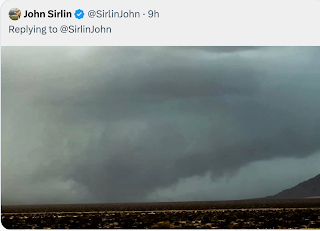Outstanding Article About Disaster Response
 |
| Photo of the Three Mile Island cooling towers taken by me about a half hour ago. |
Two quick excerpts:
A society's resilience increases with its wealth. When an earthquake shook Haiti last year, an estimated 316,000 people were killed and 1.5 million left homeless. The Japanese quake was far more powerful; it was followed by a tremendous tsunami; and the affected area had a bigger population. But the death toll is expected to be closer to 10,000, and the number of people left without homes is estimated at 500,000. We don't know what the long-term effects will be of the radiation leaks from Japan's power plants. But no matter how bad those might get, I would be deeply surprised if they're as damaging as the long-term effects when the Haitian quake contaminated the country's already-fragile water supply. Last October, for example, the country saw its first cholera outbreak in decades.
Obviously, there are many differences between Japan and Haiti. One of the most important is that Japan is much richer.
and, why you cannot depend on FEMA,
Traditionally, emergency management in America was relatively decentralized. That didn't change much after FEMA was founded in 1979, and it's a good thing it didn't; the agency had a well-deserved reputation for cronyism and incompetence, though its performance improved somewhat in the '90s. After 9/11, though, it was absorbed by the gigantic new Department of Homeland Security, and the country's emergency response system grew more centralized, militarized, and dysfunctional. The disaster researcher Kathleen Tierney—one of the scholars whose report from the Kobe quake is quoted above—wrote a withering account of the results in 2006. Traditional emergency management, she noted, takes an "all hazards" approach, in which institutions "assess their vulnerabilities, focus generically on tasks that must be performed regardless of event type, and then plan for specific contingencies, guided by risk-based assessments of what could happen." But DHS was oriented toward more specific threats, and it had the authority to impose its obsessions. Under Homeland Security Presidential Directive 8, communities that once had assessed their own risks and vulnerabilities were "required to develop plans and programs for dealing with fifteen different scenarios, thirteen of which involve terrorism, WMD, and epidemics."
In other words, DHS ignored approaches that had evolved over time in state and local governments, volunteer groups, and the private sector. When it cooked up its new ideas, such as the much-mocked color-coded threat levels, "almost no one representing either academic social science or professional emergency management was at the table." Worse still, "as we saw so vividly in Hurricane Katrina, the government’s stance is that the public in disaster-ravaged communities mainly represents a problem to be managed—by force, if necessary—and a danger to uniformed responders...
I took the photo of Three Mile Island a little while ago. I'm at the Harrisburg Airport awaiting my flight back to Wichita and the airport is nearly in the shadow of TMI. I bring this up because I have been accused of "drinking the Kool-Aid of the nuclear industry." Not at all, but let me clarify in case my position is not clear.
I believe TMI and other U.S. nuclear plants are safe. That said, there is a bit of a Rube Goldberg aspect to them that makes them complex and expensive. I do not support building any more of those. I do -- strongly -- support the new generation thorium reactors. I have read quite a bit about them and I believe they offer numerous advantages. From Wikipedia,
Thorium as a nuclear fuel
Thorium, as well as uranium and plutonium, can be used as fuel in a nuclear reactor. A thorium fuel cycle offers several potential advantages over a uranium fuel cycle including much greater abundance on Earth, superior physical and nuclear properties of the fuel, enhanced proliferationresistance, and reduced nuclear waste production. Nobel laureate Carlo Rubbia at CERN (European Organization for Nuclear Research), has worked on developing the use of thorium as a cheap, clean and safe alternative to uranium in reactors. Rubbia states that a tonne of thorium can produce as much energy as 200 tonnes of uranium, or 3,500,000 tonnes of coal.[14] One of the early pioneers of the technology was U.S. physicist Alvin Weinberg at Oak Ridge National Laboratory in Tennessee, who helped develop a working nuclear plant using liquid fuel in the 1960s...
[edit]Key benefits
According to Australian science writer Tim Dean, "thorium promises what uranium never delivered: abundant, safe and clean energy - and a way to burn up old radioactive waste."[16] With a thorium nuclear reactor, Dean stresses a number of added benefits: there is no possibility of a meltdown, it generates power inexpensively, it does not produce weapons-grade by-products, and will burn up existing high-level waste as well as nuclear weapon stockpiles.[16] Ambrose Evans-Pritchard, of the British Telegraph daily, suggests that "Obama could kill fossil fuels overnight with a nuclear dash for thorium," and could put "an end to our dependence on fossil fuels within three to five years."[14]
Let me emphasize: They burn up existing nuclear waste as well as offering relatively inexpensive, abundant fuel. There are no 'greenhouse gasses.'
As I indicate in the "Amen" posting below, I do not understand why the environment movement doesn't get strongly behind this.




Comments
Post a Comment